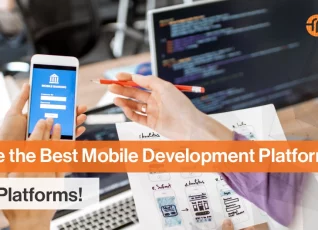Introduction
2020 will go down in history as one of the most challenging years in which the novel coronavirus infected millions across the world. Researchers are conducting and comparing assessments to what is happening now versus the impact of the 1918 flu. The difference between then and now is technology. Today, we can assess the spread of the virus, how it is mutating, and its effect on international economies. For example, with data, we can see real people moving around in places, and monitor behavior changes when authorities implement lockdown policies. All this happens in real-time.
Gaining an in-depth view of COVID-19 is possible because of Data Science, along with advancements in computing power and analytical techniques. Data-focused analytics play an increasingly essential role in tracking and recording global cases of the pandemic. For instance, Google has created maps that display stats on verified cases, deaths, recoveries, and predictions on how the crisis will evolve in the coming years.
The State Of The Pandemic
Chances are almost everyone is using a map like Google’s to stay informed on coronavirus news and latest reports. The fact that Data Science and cloud-based analytics make all this possible is lesser-known. From helping us maintain business operations to prioritizing our approaches and laying the foundations of streamlined processes, Data Science is the key to success.
Here is what you need to know about the future of Data Science in COVID-19 and beyond.
Healthcare
Why is Data Science the career of the future? Here’s your answer. The demand for healthcare providers is rising everywhere as governments urge communities to contribute to the front lines. Professionals are already leveraging Data Science analysis techniques to conduct R&D on the virus. They use reliable information from organizations such as WHO to create interactive maps like that of Google’s which people refer to every day. Data visualization in healthcare helps specialists understand how the pandemic is progressing and provides access to the latest stats. Even ML and AI as a technique feed on data to provide actionable findings.
By opting for a career in healthcare analytics, you can generate accurate reports, not to mention detailed maps of red zones and safe locations. It becomes easier to study data and conduct qualitative as well as quantitative analyses of healthcare reports from countries affected earlier. These measures will be useful in initiatives like predicting needs for masks, hand sanitizers, hospital beds, ventilators, and other medical equipment. As a result, hospitals, clinics, and insurance companies will urgently require more data scientists to process healthcare-related information that reveals critical trends and patterns. Data scientists should be at their best, and the healthcare industry will invest more in the following fields:
- Statistics
- AI & ML methods
- Storytelling, delivering meaningful analytics and insights
- Data-oriented problem solving
- Developing custom products and services, such as vaccines
- Communicating findings and results, publishing studies
- Data manipulation and developing intelligent algorithms
- Hardware for collecting data, sensors, and database management solutions
Digital Marketing
With everyone going remote, we can expect significant growth in digital marketing post-COVID-19. Regardless of industry, every business requires a digital marketing strategy to increase their presence on the web and create a compelling online value proposition. SEO, blogs, social media, local search, organic search, and Google AdWords enable companies to reach as many customers as possible. Digital marketing offers analytics that translates customer habits and behavior into valuable business information. For instance, an SEO expert can quickly pull up analytic reports to test ad campaigns and identify what customers are browsing, reading, or purchasing.
Digital marketing offers a variety of communication strategies that focus on helping businesses acquire clients, retain them, and create loyalty programs. In this case, AI and ML solutions are essential. Let’s look at a few examples. AI analyzes buying behavior and the decision-making of target audiences. AI-driven data analysis formulates successful marketing strategies and provides what customers truly need. Moreover, AI improves accuracy and precision when experts deeply analyze data for meaningful insights. We have AI voice assistants or software agents with the ability to carry out tasks based on commands.
In terms of ML, you can feed computers with quality data and train them through ML models that run on various algorithms. ML offers fast and accurate results for businesses to capitalize on profitable opportunities and prospects. Combining these solutions with AI in digital marketing makes it even more effective when processing large chunks of information.
Analytics
Will Data Science last? The answer is: yes. We can expect to see the rise of robust economic engines for Data Science, AI, and ML research in 2021 and beyond. There will be common interests surrounding data collection, analysis, modeling, and prediction. Companies will rely on these technologies to recover from the hard-hitting effects of the pandemic and drive business continuity or WFH initiatives.
Let’s explore this further. The coronavirus is the first pandemic that depends on sophisticated technologies to help us navigate the unknown. As government and health authorities issue directives for lockdown, almost everyone has gone entirely online. Now, we work from the comfort and safety of our laptops and smartphones. Companies are equipping themselves with an automated supply chain to enable quick delivery of essentials, from edibles to healthcare equipment and hobby kits. AI powers many logistics systems while streaming giants like Netflix use smart algorithms to offer recommendations according to our preferences. It is the explosion of Big Data that led to this era of remote work, home delivery, and entertainment.
So, businesses will focus more on the following:
- Managing the supply chain lifecycle
- Accessing the operational impact of COVID-19
- Developing simulations based on historical recession datasets
- Conducting social media sentiment analysis of queries and concerns related to the pandemic
- Using POS data to assist distributors with identifying and shipping the most crucial items to customers
- Analytics investment that is driven by the need for efficiency measures and low-cost customer support platforms
Global Big Data Analytics
According to Cision, the Global Big Data Analytics Market was worth the US $37.34b in 2018. This figure is likely to touch the US $105.08b by 2027 at a CAGR of 12.3% from 2019 to 2027. If we think about it, these numbers are not small. So, what brings about the difference?
Today, embedded ecosystems have contributed to the rise of IoT which translates into a hyper-connected world. Ubiquitous networks enable IoT to connect endpoints and disclose valuable data. The volume and value of data empower decision-making like never before. It helps draw, visualize, and use intelligence in near real-time especially when meeting time and mission-critical objectives.
Global Big Data analytics brings data discovery and visualization as well as advanced analytics. Even before COVID-19, investors worldwide were showing a keen interest in both groups, and funding attracted millions of dollars. Research unveiled use cases across industry verticals and niches. Businesses began to form industry partnerships across countries and provinces to fulfill the growing need for these solutions.
As we navigate the pandemic, the Global Big Data analytics market becomes even more crucial. This is because of the operational benefits of Big Data analytics allow Data Science engineers to make more informed decisions.
Conclusion
What is next after Data Science? One thing for sure is that Data Science future trends appear to be exciting because technology is working for us in ways like never before. Statistically speaking, the prospect of Data Science is promising especially as we adapt ourselves to a new normal. The COVID-19 pandemic has increased the prominence of technologies that we use to obtain high-resolution data on countries and cities. So, data engineers will contribute even further to such causes, especially considering that the virus is not likely to go away anytime soon. What we can do is leverage the vast data resources we have to ask the right questions and find some useful answers.









